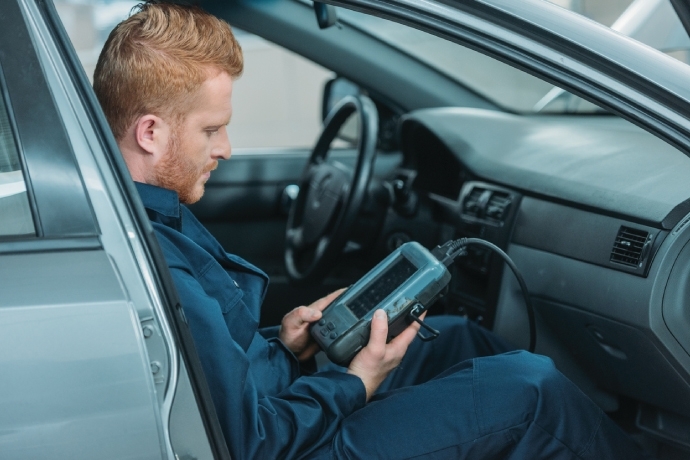Pre- and Post- Repair Scanning

Vehicles continue to advance and OEM requirements/recommendations are prevalent across all major brands, making identifying and following a uniform process for pre- and post- scanning fundamental for the shop. In fact, 80% of vehicles sold in the U.S. today come with an OEM position statement requiring scanning as one of the steps in the repair process.
Two weeks ago, we had the opportunity to partner with BodyShop Business and address some of the biggest questions shops have around scanning. Our moderators Debbie Menz, Strategic Accounts Manager at Axalta Coating Systems, and Connie Schultz, Collision Center Director at Sunset Cadillac of Sarasota walked through some of the most common questions about scanning. In this summary, learn more about how your shop can begin building a better scanning process today.
Why Scanning is Vital
From sonars to cameras, new cars have between 40 and 100 electronic controls. These sensors all have a diagnostic trouble code which exists internally and can only be discovered through scanning.
Scanning can identify things going on within a vehicle without a light or any indication that something is wrong. Having a standard operating procedure for scanning and understanding the importance of it will help your shop ensure a safe and proper repair.
When to Scan
Finding the best time to begin the scanning process is important to protect both your shop and your customers. At Sunset Cadillac of Sarasota, Connie said they pre-scan as soon as cars are pulled in the door for repair. In a poll taken during the webinar, when asked how they decide which vehicles to pre/post scan, the results were:
- 45% - scan all vehicles
- 37% - scan only newer cars with SRS, ADC, ARS
- 17.8% - scan only when paid to do so
No matter what process your shop decides to follow, it is vital to have it in place, so everyone is consistent and can fully explain the importance of why a scan needs to happen to the customers.
Scans are really in place to ensure the safety of the customer. Pre-scanning either proves a vehicle system is undamaged or identifies what is damaged and what need to be repaired. Post-scanning proves the system is operational once repaired and gives the shop proof of proper performance at time of completion.
Customers don’t know what is going on behind the scenes when you take their car back, but they trust the shop is the expert.
“When they bring their vehicle in to us, we’re not only going to repair it to where it looks nice, but it’s going to be safe…and it is our responsibility to live up to that trust,” said Debbie Menz.
Billing Options
This is an area that each shop will have to decide their own best practice. There are different methods:
- Sublet billing if an outside provider is being used for scans
- Hourly at mechanical rate plus drive time if taken to dealership
- Flat rate
Whichever billing method works best for you and your customers, make sure it is communicated and documented from the beginning.
Authorization
Throughout the entire process of scanning, it is important to keep documentation. There are many position statements available from OEM manufacturers that can help the shop justify why scanning is needed. Keep in mind, the shop can be held liable for un-safe repairs. Having a customer sign an authorization to scan form is a great way to make customers aware as well as keep your shop safe. It also confirms your customer understands there is personal data stored in their vehicle’s system.
Pre- and post- scanning will only become more prevalent in the collision industry. Take some time to make sure you, your shop, your team members, and your customers are educated on its importance by diving more in depth into the topic. Watch a recorded version of the webinar here.
Note: Once you register, the recorded link is available.
